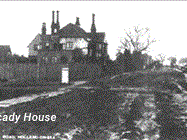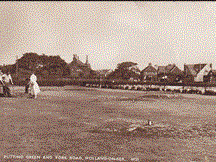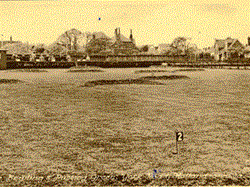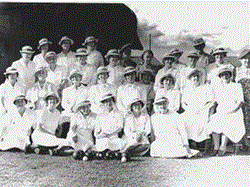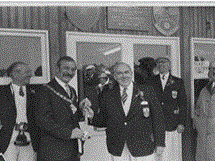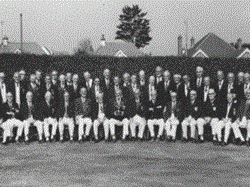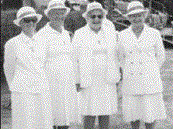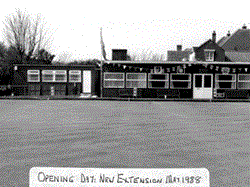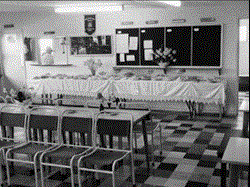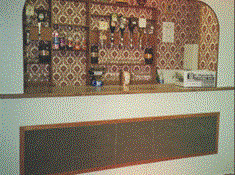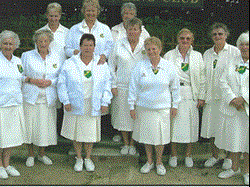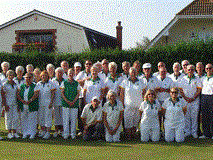History of Club
IN THE BEGINNING
Holland-on-Sea was once known as Little Holland, a small village until the early 20th century. Mentioned in the Domesday Survey of 1086 it was known then as Hoilanda. Time has seen the landscape and coastline alter along with its’ inhabitants. Boasting 75 residents in 1841, with its populace increasing during the 20th century, the area in 1926 becoming officially known as Holland-on-Sea. In 1900 an entrepreneur had purchased, at auction, most of the land of the village and devised four building estates with road layouts and divided into building plots. The new residents to Holland began working hard to create their idyll and leisure pursuits were a necessity if a sense of community was to flourish. Mrs Ada Maria Garner-Watts lived at Arcady, now known as York House, situate on the corner of York Road and Madeira Road. The distinctive house was built in 1910 and its’ land extended to Kings Parade. In a chalet house alongside, the cook and chauffeur lived. Mrs Garner-Watt, hosted the Countess of Warwick from Easton Park more than once. It was Mrs Garner-Watts decision to establish the Little Holland Tennis Courts on part of her land and in 1925 these were opened, being the first such sports facility in the village.
In 1929 the tennis courts went up for auction. They were described as:“Delightful freehold property set on cliffs, the Little Holland Tennis Courts, comprising of six full size courts, pavilion with lounge opening on to two large verandas. Two dressing rooms, lavatory, basin and WC.” In 1934 Holland-on-Sea was transferred into the area of the Clacton Urban District Council, and later the tennis courts were purchased by the council in July 1937. The tennis courts were formally opened together with a miniature golf course. When the York Road Bowls Club was formed in 1949 the thatched pavilion, previously used as a tennis pavilion, became the bowls clubhouse. The building was substantially in the municipal pitch and putt operated by the Clacton Urban District Council as a tourist facility. So whilst the public could not enter the pavilion they could peer through the windows and stand on the veranda at either end. There was also a public convenience, which was to its rear and you accessed this by walking left round the back for the Ladies, whilst the Gents was actually part of the pavilion and you accessed this by going right and in via the first veranda. It was not until the 1960s that the bowls club had a new building erected and the thatched pavilion laid empty for a short while.
When the Gunfleet Boating Club was formed, the Chairman, Commodore Tim Webster (who was also Chairman of Clacton Urban District Council) spotted the empty pavilion, leased the building and converted it into a clubhouse. The Boating Club always saw this as a temporary arrangement and in 1977 found a piece of land up by the Holland Haven. They built their clubhouse as it stands today. The thatched pavilion was leased shortly after to the Clacton Co-Op Band to practice in. There were several complaints by local residents of the noise from the instruments and shortly after the building mysteriously burnt down. It had its thatched roof right up to the end and being of creosoted weather-board construction you can imagine the fire took hold very quickly. Thus a very attractive little pavilion finally met its end.
WORLD WAR 11
At the onset of World War II leisure pursuits were put on hold whilst organisations such as “The Royal Navy Knitters Joy Club” were formed. A public air-raid shelter was built on the land opposite the Roaring Donkey Public House. Government broadcasting vans toured the area advising the elderly, women and children to leave the area. A six inch Coastal Artillery gun-site was constructed on the cliff top, with numerous other smaller defences, and the cliffs were mined. When the threat of invasion diminished many residents returned, but built Anderson Shelters, or were supplied with the indoor Morrison Shelters for protection. Finally, once the hostilities had ended, life slowly began to get back to normal. Holland-on-Sea Bowling Club, where the Roaring Donkey Public House stands today, was established in 1935. However, in January of 1949, a meeting was held in the public hall to discuss the proposal for a new municipal bowling green at York Road. The meeting must have been a success as in April, of the same year, York Road Bowling Green was formally opened by H.Powis, Chairman of the Clacton Urban District Council.
BOWLING AT HOLLAND-ON-SEA
A quote from the Official Guide for Clacton in 1953 states: “Recreational facilities have been provided by the Council at York Road, where there is a first class bowling green and 18 hole putting course (with car park adjoining). A pleasant thatched Club House is attached, which is the home of the York Road Bowling Club and the Holland-on-Sea Ladies Club.” The Holland-on-Sea Bowling Club closed in 1979 owing to the loss of its green and York Road became known as Holland-on-Sea (York Road) Bowls Club.
Of course, rent had to be paid by the club to the Clacton Urban District Council. There must have been some dispute as in 1955 a letter was sent by the Council to the Chairman and Gentlemen of the Bowls Committee as follows:“It will be generally acknowledged that the large majority of municipal bowling greens throughout the country are rate subsidised. The maintenance required to keep a green in first-class condition is higher than for any other form of outdoor sport, bearing in mind the size of the playing area and the number of spectators who can be seated with a view of the play. Whilst the figures show there is little hope of making the game self-supporting, surely it is not asking much, even for men and women in the evening of life, to pay 2/6d a week for this gentle recreation of mind and body.” The dispute must have been settled as the club progressed from strength to strength entering various leagues and district competitions. In the first season there were thirty lady members. In the first Ladies Captain’s Report in October 1949 Mrs Hey commented: “Our association with the men’s club have been most amiable, and having some dozen husbands and wives playing on the same green has helped the friendly atmosphere.” In 1950 it was decided to have ‘made to measure’ club blazers in the colour green.
King George VI and Queen Mary were the reigning royalty at the time and on special occasions the club would award postcards of the Royal Family.
At the end of the first season the Treasurer’s Report boasted a £9.1s.6d balance with assets of seven hatbands at 3s each. The Presentation Annual Dinner that year was held at the Kings Cliff Hotel, attended by 53 members and friends.The social part of the evening ended with the singing of Auld Lang Syne and God Save the King. On 16th November 1951 bowling history was made for the first time as both men and women bowling clubs joined together for a joint annual dinner and presentation held at the Hadleigh Hotel Clacton. In February of 1953 Mrs Hey, first lady Captain, donated to the club its very own flag. Competitions in that year included The “Johns” Cup, The “Hey” Cup, The “Clayton” Cup and The “Coronation” Cup.
The John Trophy was given by Mr and Mrs Johns of Clacton to the ladies of the Holland-on-Sea (York Road) Bowls Club in 1949. This singles championship was to be played annually “on the express understanding, in the event of the York Road Ladies Club ceasing to function, the cup shall be returned to the donors.” Mrs Hey, who was the Captain, signed the agreement to this effect. Mrs Hey and her husband also donated the club’s first Honours Board on 4th June 1956. Mrs Hey was a great contributor and founder of our club, becoming Junior Vice President of the ECWBA in 1952, Senior Vice President in 1953 and finally President in 1954, holding her County President’s Day at York Road. The Treasurer’s Report of that year quoted an increased balance of £445.12s.0d. It is interesting to note that it was minuted at the AGM in 1960 that Colchester matches were ended as members were reluctant to travel that far. York Road Bowls Club entered competitive leagues as well as friendly matches against other local clubs. In 1954, for the first time, they became the winners of the Tendring Hundred League and once again in 1960. See photograph below.
In 1964, one of the founder members of the club, Mr S L Le Mare, then aged 91 years of age and living at 101 Madeira Road; ‘father and founder member of the York Road Bowls Club’ was made an honorary life member. However, his membership was short lived as he died in 1965. In 1966 the club was presented with its’ very own flag pole, presented by A V Barkham Esq. In 1970 a new bowls pavilion was erected and was officially opened on 25th April 1970 by Jack V Goldsmith, Chairman of the Clacton Urban District Council.
From the records, loans were often accepted in order to fund the necessary improvements to the club. In 1976 more than seventy members of the club attended a very successful Christmas social held in the pavilion. The two main attractions were the draw for the Christmas raffle and the draw for the repayment of Pavilion Building Fund loans. 1977 saw the club celebrating the Queen’s Silver Jubilee. The competitive streak was working well as in 1979 the men once again captured the Championship Trophy of the THL Bowls League
The men were not the only ones to win success as you can see by the photo of the Ladies in the 1983 National Finals at Leamington. Unfortunately, there were no names attributed to the photo.
Fire caused serious damage in the pavilion during 1983 and a great deal of renovation work had to be carried out. In 1988 planning approval was granted by the Tendring District Council for the club to build an extension to the existing building and construction of additional gents changing room and bar store. Permission was also granted to construct two all-weather bowling rinks on a section of the car park which had been purchased from the Council. The club members self-built and refurbished the club house as well as increasing the rinks from six to seven. The Bowling Association helped with a £10,000 loan, the club appointing three Trustees to act as sureties.
Never to let the grass (green) grow under bowling feet, the club, twelve years later, once again underwent another refurbishment, extending the kitchen as well as incorporating the ladies and gents changing rooms into the main club house.
On the 23rd April 2000, Dennis Grant, Vice President of the Essex Bowling Association formally opened it. In 2004 The Men’s Club and the Ladies Bowling Club became a joint membership and a Constitution was put in place. The club was then granted Community Amateur Sports Charity status enabling the club to claim certain financial entitlements from Tendring District Council.
FOR YOUR AMUSEMENT BOWLER’S
“IF”
If you can build a head, when lead or second are playing wide, or narrow, or too short, and third, upon whose skill you always reckoned is doing anything but what he ought. If you can win, and not be too uplifted, or lose, and not be downcast by defeat, remembering that the lucky or the gifted can, on their off days both be badly beat.
If you can smile, and not give way to cursing, or blame the green, or deem your luck too hard when the position you’ve been grimly nursing is shattered by a drive you could not guard. f you can draw the shot right on the kitty when half a dozen woods are in your way, if you can grin and hum a cheerful ditty when ends are burnt and jack is out of play.
If you can give your third the hand you favour and see him take the other and go wide, and then go down and try and draw a saver with the kitty guarded well on every side. If you can drive and miss and not be worried by your opponent’s shout of “still we lie” and draw again with the heart and brain unflurried and tap the winning wood and make it fly.
If you can draw the shot in that last minute when yells are called and something must be done, yours is the game and you deserve to win it, and what is more, you’ll be a skip my son.
CLUB MATCH EXCUSE LIST
For not playing in away matches.
Spouse – going out/stopping in; ill, much better; in one of those moods.
Disapproves of green; bar prices; dressing room; raffle prizes; raspberry jam (pips got under plate on last visit)
Physically unfit – ancient medical certificate kept in wallet clinches the argument
Rained heavily when played there the year before last.
Wax in ear – sudden affliction of instant deafness renders pleadings of Match Sec. Totally inaudible.
FINALLY, FOR THE TIME BEING
There is of course much more to the club than this brief history.
However, this is for future generations of members to add to. Today, in 2021, the club is thriving and yet, the aims remain the same:
“To enjoy the game and relish the company.”
